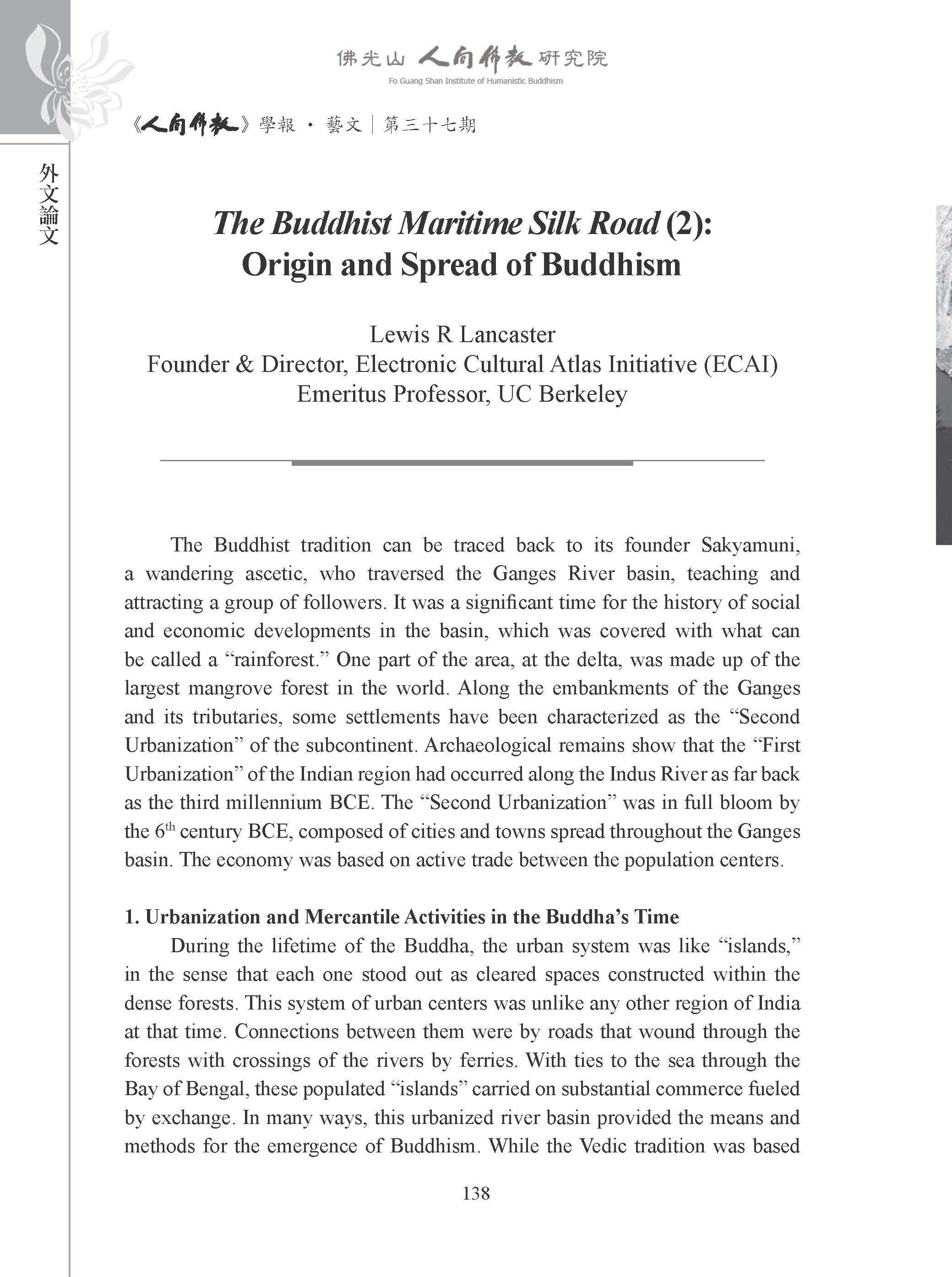
|
The Buddhist Maritime Silk Road (2): Origin and Spread of Buddhism
分類
論文
期別
《人間佛教》學報‧藝文第37期
作者
Lewis R. Lancaster
單位職稱
Founder & Director, Electronic Cultural Atlas Initiative (ECAI) Emeritus Professor, UC Berkeley
其他名稱
《佛教海線絲綢之路》第二章——佛教的起源和傳播
編者
妙凡、蔡孟樺主編
摘要
The Buddhist tradition can be traced back to its founder Sakyamuni, a wandering ascetic, who traversed the Ganges River basin, teaching and attracting a group of followers. It was a significant time for the history of social and economic developments in the basin, which was covered with what can be called a “rainforest.” One part of the area, at the delta, was made up of the largest mangrove forest in the world. Along the embankments of the Ganges and its tributaries, some settlements have been characterized as the “Second Urbanization” of the subcontinent. Archaeological remains show that the “First Urbanization” of the Indian region had occurred along the Indus River as far back as the third millennium BCE. The “Second Urbanization” was in full bloom by the 6th century BCE, composed of cities and towns spread throughout the Ganges basin. The economy was based on active trade between the population centers.
引文
Lewis R. Lancaster, " The Buddhist Maritime Silk Road (2): Origin and Spread of Buddhism, " 《人間佛教》學報‧藝文第37期 (2022): 138-155
全文下載











